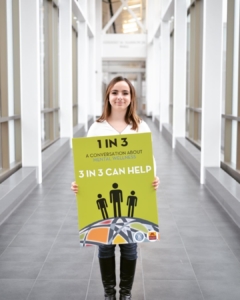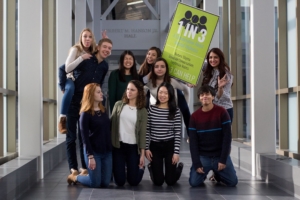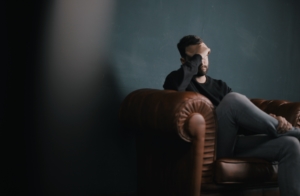For Jane Hershman, senior director of the BBA Career Management Center at Emory University’s Goizueta Business School, it’s a disturbing trend that’s unfolding before her eyes. In the undergraduate business program, “For whatever reason, each class that comes in is more stressed than the last,” she says.
A recently released report from the Center for Collegiate Mental Health (CCMH) at Penn State University supports Hershman’s observations, showing over the past four years there’s been a noticeable rise in anxiety and depression among college students who sought mental health treatments.
ANXIETY CONTINUOUSLY OUTRANKS ALL MENTAL HEALTH CONCERNS AMONG COLLEGE STUDENTS
“While counseling centers treat dozens and dozens of complex mental health concerns, the data increasingly suggest that the demand created by anxiety and depression dramatically exceeds all other concerns — and is continuing to grow,” said Ben Locke in a press release about the report. Locke is the executive director of CCMH, a practice-research network of nearly 500 colleges and universities focused on understanding and describing college student mental health.
2017 marked the the center’s ninth annual report and described 161,014 unique college students undergoing mental health treatment. Findings show anxiety and depression continue to be the most common presenting concerns for college students, as identified by counseling center staff, and are the only presenting concerns that have demonstrated a growth trend over the last several years.
What’s more, according to a 2016-2017 academic year survey of more than 600 college counseling center directors, the Association for University and College Counseling Center Directors (AUCCCD) also found that anxiety is the most frequent concern among college students. In fact, this is the eighth year in a row anxiety held the top spot in the AUCCCD survey. Rounding out this year’s top three most frequent concerns were stress and depression.
According to Locke at Penn State’s Center for Collegiate Mental Health, addressing the growing prevalence of anxiety and depression will require colleges and universities to work with their counseling centers to develop a continuum of services.

Carlson senior, Madison Schwartz, says one reason for stress among students is fear of failure. Photo courtesy of Minnesota Student Association
“Effectively addressing this trend will require a range of large-scale efforts aimed at helping the general student body successfully navigate the developmentally normative experiences of anxiety and depression common to this age group while also making more intensive treatment available to those in need.”
CARLSON HIRES AN EMBEDDED COUNSELOR
Duly noted, says the University of Minnesota’s Carlson School of Management. The school is taking special care to address mental health among its student body and is one of the first business schools to introduce an embedded counselor as a resource.
Housed in the business school, but reporting to the university’s central student counseling center, the Carlson counselor was brought on board on July 30 with a number of factors contributing to her hiring. First, a tremendous response from the university at-large on the call to increase staff and counseling resources centered on mental health. This, after students reported extended wait times and not being able to get the help they needed. Another factor: a very public suicide of a Carlson undergraduate student.
Combined, these factors led to a discussion among the school’s leaders about planting a counselor within the business school. “We learned about embedded counselors from the University of Texas at Austin’s McCombs School of Business and the University of Michigan,” Katie Selby tells Poets&Quants for Undergrads. Selby serves as Carlson’s director of student engagement.
“The business school is separated from the main campus by the Mississippi River,” Selby says. “We are on the west bank and there are no counselors on this side. That was one of the things we thought was a barrier for our students.”
Selby says much of the credit goes to Carlson’s undergrad dean, Raj Singh, who has taken a personal interest in the issue. “All of it was headed by Raj,” she says. “He, as a faculty member, has been very committed to this issue. He pitched the idea to get funding for our counselor.”
STUDENTS SPEAK UP
Above all, however, Selby says mental health initiatives at the University of Minnesota and at Carlson are largely student-led.
“This conversation came from our students,” she says. “During the fall of 2014, Carlson’s student government members basically came to us with a message saying, ‘We need to start a conversation around what’s going on with students and mental health.’”

Minnesota Carlson’s “One in Three” initiative is an annual event to raise awareness about student mental health. Carlson photo
It began with a student-run survey which showed one in four Carlson students felt they were out of control managing their stress in the business school, followed by a detailed presentation to faculty and administrators of what they can do inside the classroom to help minimize students’ feelings of anxiety. The recommendations included incorporating stress management into class discussions — particularly during high-stress times such as exams — and even opening up about their own lived experiences with stress, anxiety, and feelings of being overwhelmed.
That same year, students also led Carlson’s inaugural “One in Four” event, named after the statistic that one in every four students are affected by mental health. To note: the event is now called “One in Three” as the prevalence of these issues continue to spread.
“The format of the event was that they stood in the grand atrium of our business school and an alum would speak about his experience at Carlson and mental health,” says Selby. “Then people would go to the microphone and share their own experiences.”
Selby admits she and other administrators questioned whether students would actually attend and participate, but then something transformative happened. “For an hour and a half, student after student came to the microphone and told their story. It was sobering and scary; something none of us would ever forget,” she recalls.
In attendance during that event was Madison Schwartz. Then a freshman, she is now a rising senior at Carlson. She was a part of the team to help coordinate the One in Four event and has been one of the more outspoken students to champion the dialogue around students and mental health.
“At the time,” she says, “I was a freshman and I just wanted to be there to support as another body in the room to show how important this is. There was an open microphone and student after student went up and spoke about how they’re really struggling, but can’t get help.”












Questions about this article? Email us or leave a comment below.